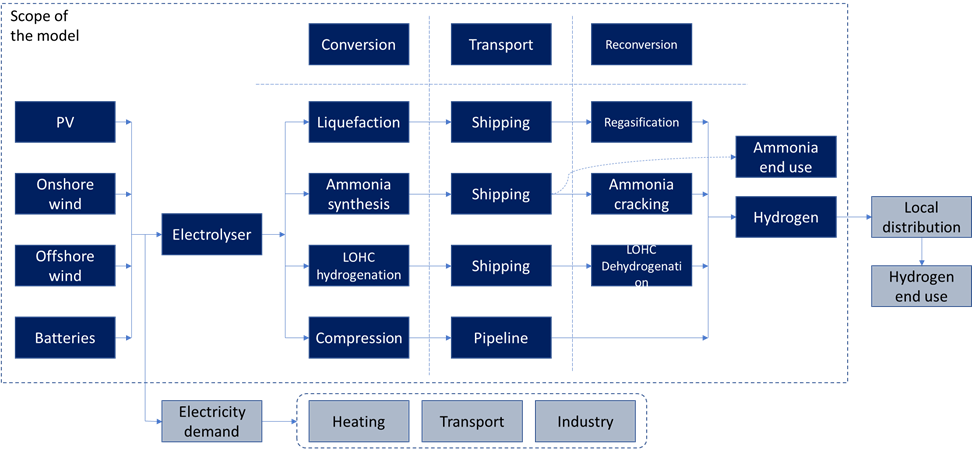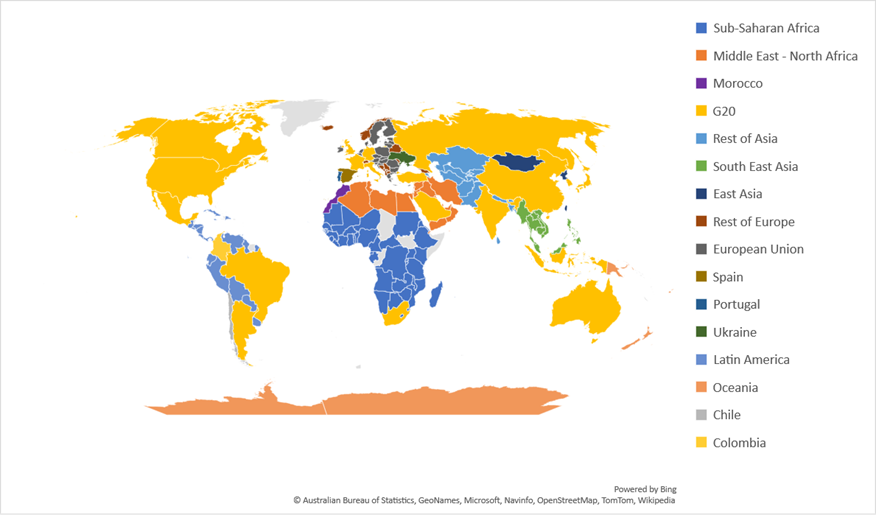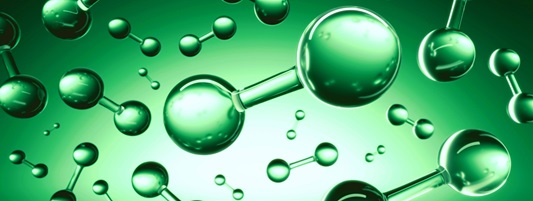Hydrogen
Upcoming events
2024 International Hydrogen Conference
About
The ETHER model covers the production, transport and use of both power and gas and co-optimises the investments, gas shipping and dispatch of the combined power and gas system. For hydrogen, the scope of the model extends from renewable generation to hydrogen production, transport and end use (see Figure 8). Resource data for PV, onshore wind and offshore wind are split into five resource classes for each region based on the quality of the renewable resource, with a maximum potential and a representative hourly profile. Given that the methodology is based on least-cost optimisation, trade flows are driven purely by delivered cost. In the future, hydrogen trade flows will also be largely shaped by geopolitical factors, especially if the production cost differentials between regions are small and geopolitical preferences would result in only small cost penalties, in exchange for lower risk of supply disruptions.

The time horizon can be a single year or an entire period (e.g. 2020-2050). To make both the calculation of the flows and the interpretation of the results easier, the model is divided in 34 regions (see Figure 9): each G20 country, selected countries that could play a significant role in hydrogen trade (Chile, Colombia, Morocco, Portugal, Spain and Ukraine), and the remaining countries aggregated by geographical location (e.g. East Asia, Latin America).

The model does not include electricity grid expansion within or between regions. Each node is assumed to achieve maximum grid expansion, although it is recognised that in many countries achieving this might be challenging (e.g. because of social opposition, permitting, project delays, lack of market incentives), especially in densely populated areas. Energy exchange through hydrogen pipelines and ships, although less efficient, has a larger transport capacity, provides diversification of energy supply, and is potentially less challenging in terms of the necessary conditions for infrastructure and markets, especially where existing natural gas pipelines can be repurposed to transport pure hydrogen.
[1] Developed using the commercial modeling tool PLEXOS.
Past Events
More events-
29 February 2024 Virtual
IRENA Policy Talks 2024 – Water for Hydrogen Production
-
1 November 2023 Virtual
8th Meeting of the Collaborative Framework on Green Hydrogen
-
26 April 2023 Virtual
Collaborative Framework on Green Hydrogen (CFGH)
-
22 March 2023 Virtual
9th Collaborative Framework on Green Hydrogen
-
16 March 2022 Virtual
Hydrogen in the Gas Grid Workshop-2





